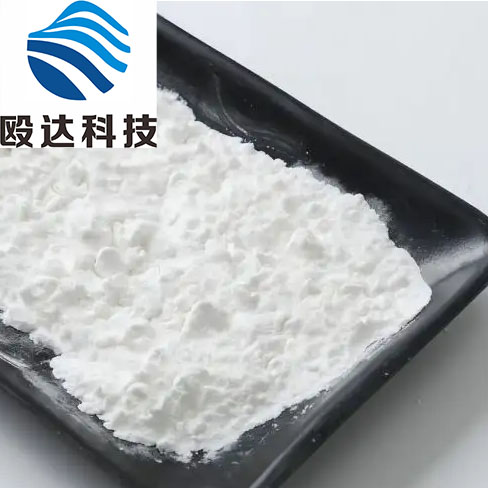-
Categories
-
Pharmaceutical Intermediates
-
Active Pharmaceutical Ingredients
-
Food Additives
- Industrial Coatings
- Agrochemicals
- Dyes and Pigments
- Surfactant
- Flavors and Fragrances
- Chemical Reagents
- Catalyst and Auxiliary
- Natural Products
- Inorganic Chemistry
-
Organic Chemistry
-
Biochemical Engineering
- Analytical Chemistry
- Cosmetic Ingredient
-
Pharmaceutical Intermediates
Promotion
ECHEMI Mall
Wholesale
Weekly Price
Exhibition
News
-
Trade Service
Diabetes is closely related to trace elements, which are found to be the most closely related to these micro-elements.
, Dr. Robert M. Giller stresses in his book (Natural Agents) that radon is a natural element that can be helpful to many people with diabetes.
can be buffered intake, and its islet-like properties can increase muscle and liver absorption of glucose, protein.
in Brussels, Belgium, studied experimental animals and found that radon compounds use different signaling pathways to simulate insulin activity.
animals that take vanadylacetylacetonate contain large amounts of vanadylacetylacetonate in their plasma or tissues, which may be due to the very good absorption of acetone acetate in the intestines.
organic radon compounds, especially acetaminophenic acid, are more safe and effective than vanadyl sulfate to correct hyperglycemia and renal glycolysis disorders in diabetic rats.
this not only indicates that the absorption of acetic acetic acid in the intestine is better, but also shows that the islet-like activity of acetaminophenate is higher.
high blood sugar indicates high levels of glucose in circulating blood, especially in diabetes.
researchers in Spain studied young and old spragye-dawley rats and found that rats treated with radon or niobate had higher concentrations of radon in their kidneys than those without treatment.
french researchers studied 68 wines from different regions, including France and California, to show their radon content.
results, it was found that the concentration of radon in red wine ranged from 7 to 90 micrograms per litre, while the concentration of radon contained in liquor ranged from 6.6 to 43.9 micrograms per litre.
wine is stored for a long time, the more radon it contains.
, the researchers concluded that the average French person consumes 11 micrograms of radon per day from their diet.
, obesity, and cardiovascular disease are among the top health problems among Americans, saying the public is too light on the importance of neglect.
is not clear about the dietary needs of radon, the general Western diet can provide about 15 to 30 micrograms of radon per day.
can provide palladium food, including mushrooms, parsley, dill, and black pepper.
many different formulations of vanadium, such as niobium sulfates, are available on the market.
, manganese elements can stimulate islet cells to secrete and release insulin, manganese deficiency will cause pre-insulin M-PNA levels to decrease, resulting in reduced insulin production.
manganese ions are natural immune activators and alarms in cells, and currently the main study suggests that they can improve the effectiveness of tumor immunotherapy (see: Cell Res: "Manganese-free therapy" - manganese ions can improve the response rate of tumor immunotherapy).
a recent study, researchers included 84,285 post-menoanthan women with no history of diabetes from the National Women's Health Program Observation Study (WHI-OS).
then repeated the analysis in 62,338 women who participated in the WHI clinical trial (WHI-CT).
Found that higher manganese intake was directly associated with a lower risk of type 2 diabetes, and was not directly related to known risk factors (see in detail: the relationship between manganese in the diet, plasma inflammatory markers and type 2 diabetes in post-menoanthe women) of course, manganese could not be replenished too much, otherwise it would lead to increased muscle dystuffles, elevated blood pressure and other adverse problems.
3, scientists at Zinc Yaroslavl State University demonstrated a relationship between changes in the concentration of trace elements and pre-diabetes, in which researchers found that zinc plays a crucial role in type 2 diabetes, and obtained data showing that zinc metabolic disorders are important for the development of diabetes.
trace elements, including zinc, chromium, radon and other transductive effects on insulin signals.
, many toxic metals, such as cadmium and mercury, can also lead to insulin resistance, a pre-warning sign of developing type 2 diabetes.
the results of this study emphasize the importance of zinc metabolism for the pathogenesis of diabetes.
, the researchers recommend assessing zinc levels in the body to understand the risk of the disease, and using zinc-containing food additives as a precautionary measure for type 2 diabetes.
Details: J Trace Elem Med Biol: Scientists have confirmed for the first time the magical effects of zinc on type 2 diabetes And recently found zinc to be resistant to diarrhea (see: NEJM: The efficacy of low-dose zinc for diarrhea in children) and as an auxiliary treatment for neocytic pneumonia.
4. Chromium American Encyclopedia of Food and Nutrition summarizes the function of chromium in the human body has three: (1) it is the active chromium-glucose resistance factor (GTF) component, can help insulin to function, promote the normal development of body carbohydrate, fat metabolism;
insulin works to consume chromium.
each molecule consumes two atoms of chromium when it works.
and chromium and calcium elements are different, once the human body chromium is mobilized, it will not be absorbed back to use, the body can only use about 10%, the rest of chromium is excreted through urine.
test of urine chromium is different from urine zinc, urinary zinc is too high, indicating too much zinc in the body, and high urinary chromium indicates that the loss of chromium is serious, the higher the urine chromium lack of chromium more serious.
the longer the course of diabetes, the greater the amount of medication, the more severe the lack of chromium.
chromium and increase insulin resistance, which is why diabetics have more and more difficult to control blood sugar, complications more and more important reasons.
In 1999, after 4 weeks of chromium supplementation for diabetics, experts found that the patient's blood sugar decreased significantly in 2 hours after meals, with an efficiency of 60% to 73.3%, indicating that chromium does have an auxiliary sugar-lowering effect, which shows that chromium is of great significance in diabetes prevention.
element chromium has a variety of price states, common for 3 and 6 prices, different properties of different price states are also different.
6 price chromium on the body toxic effects, absolutely not edible.
good for our health is 3-price chromium, there is ample evidence that oral 1000 micrograms of 3-price chromium per day is absolutely safe.
common 3-price chromium (inorgestring) in the body absorption rate is low, poor activity, only with amino acids compounded into active chromium-glucose tolerance factor (GTF), can show strong physiological function.
chromium is used in vivo in the form of active chromium.
studies have shown that people with diabetes are in high demand for active chromium and cannot synthesize inororal chromium from their diet into enough active chromium.
in order to avoid the depletion of limited active chromium resources in diabetic human body, it is advisable to eat the active chromium extracted from beer yeast or coke milk directly, but these two types of chromium extraction and purification is more difficult.
is that in-body synthetic active chromium in China has made a breakthrough, this active chromium can be used directly by the body, clinical application effect is very good.
in nature, grains with a higher chromium content are wheat bran, with 50 μg per kg, followed by yams and nuts 15 to 50 μg/kg.
is slightly higher than the sea product by about 100 μg/kg.
about 10-30 μg/kg in the liver of an animal.
yeast contains chromium of about 5 to 10 μg/kg.
the above foods to supplement chromium for healthy people can prevent chromium deficiency, the daily supplement is about 50 μg.
diabetics need at least 200 μg of chromium per day.
, the chromium content of poultry and fish, which people often eat in their lives, is low, and the chromium content of fruits, vegetables and cereal products is very different.
already known: animal liver, beer yeast, black pepper and coyose milk contain high levels of chromium, often eat such foods are good for the body to supplement chromium.
, magnesium is the second messenger of insulin, magnesium deficiency will block the play of various effects of insulin, interfere with the normal metabolism of cells.
new research suggests that diabetics may be associated with hypognesium deficiency in heart, kidney, retinal and neuropathic comorbidity.
serum magnesium levels were negatively associated with the incidence of these complications.
, diabetics still have large amounts of magnesium excreted from their urine when serum magnesium is very low.
, the 5th International Magnesium Conference reported that magnesium can improve glucose tolerance and reduce insulin use.
, Selenium Japan's National Institute of Health and Nutrition found that selenium can significantly promote cell-to-sugar intake, with the same physiological activity as insulin to regulate sugar metabolism.
, 60-80% of people with diabetes suffer from malnutrition or imbalance.
especially minerals and trace elements.
type 1 diabetes often have vitamin A, B1, B2, B6, C, D, E and other deficiencies.
B vitamins, β-carotene and vitamin C, D and E deficiency are more common in patients with type 2 diabetes.
Of course, The Mays Medical Editor also reminds you that trace elements are important in the prevention of diabetes, but once you develop diabetes, it is very difficult to reverse by supplementing micro-elements alone, and still need sugar-lowering drugs for treatment, micro-element supplementation is only a complementary effect.
MedSci Original Source: MedSci Original Copyright Notice: All text, images and audio and video materials on this website that indicate "Source: Mets Medicine" or "Source: MedSci Originals" are owned by Mets Medicine and are not authorized to be reproduced by any media, website or individual, and are authorized to be reproduced with the words "Source: Mets Medicine".
all reprinted articles on this website are for the purpose of transmitting more information and clearly indicate the source and author, and media or individuals who do not wish to be reproduced may contact us and we will delete them immediately.
reproduce content at the same time does not represent the position of this site.
leave a message here.







